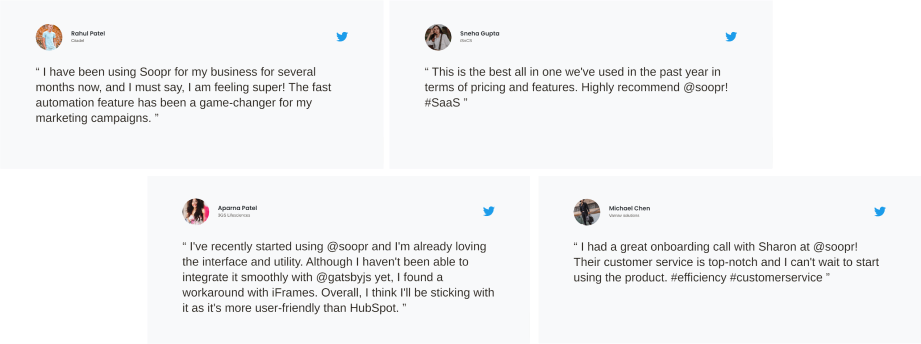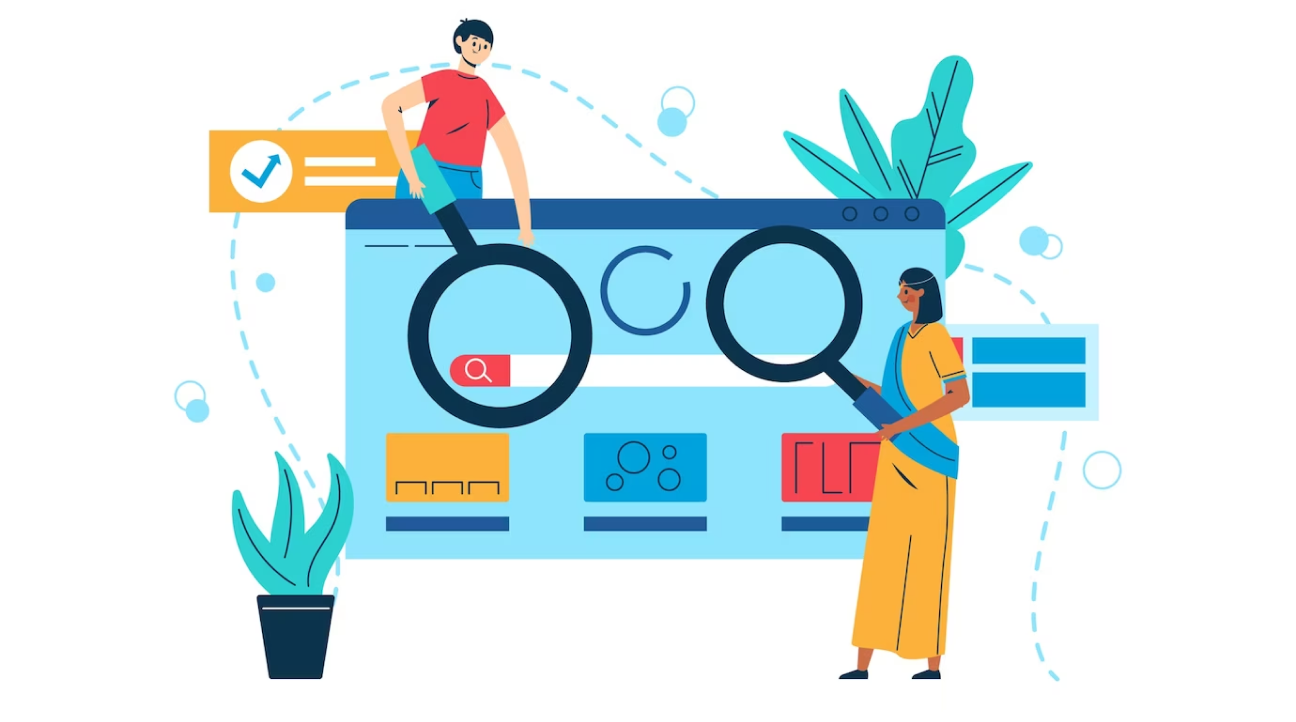In today's digital age, having a strong online presence is crucial for the success of any business. A website is not just a tool for providing information about your products or services; it can also be a powerful tool for generating leads and attracting new customers. In this article, we will explore the best practices for optimizing your website for lead generation, as well as real-world case studies of businesses that have successfully implemented these practices.
Identify your target audience
Before you can start generating leads through your website, you need to identify your target audience. Who are your ideal customers, and what are their needs, wants, and pain points? Understanding your target audience is essential for creating content and web designing in a way that resonates with them and addresses their specific needs.
To identify your target audience, conduct market research, analyze your existing customer base, and create buyer personas. A buyer persona is a detailed profile of your ideal customer, including demographic information, interests, behavior, and pain points. Creating buyer personas can help you understand your target audience's motivations and tailor your website's messaging and content to their specific needs.
Case study: HubSpot
HubSpot, a marketing and sales software company, is known for their inbound marketing approach, which focuses on attracting potential customers through valuable content and targeted messaging. To identify their target audience, they created buyer personas based on data from their existing customer base and conducted extensive market research. This approach helped them create content and messaging that resonated with their target audience and ultimately generated leads for their business.
Optimize your website for search engines

Search engine optimization (SEO) is the process of improving your website's visibility on search engine results pages (SERPs) for relevant keywords and phrases. SEO is critical for lead generation because it helps potential customers find your website when they are searching for products or services like yours.
To optimize your website for SEO, you need to create high-quality, relevant, and valuable content that incorporates relevant keywords and phrases. Conduct keyword research to identify the search terms that your target audience is using to find products or services like yours. Use these keywords throughout your website's content, including in your blog posts, landing pages, and product descriptions.
In addition to content, there are several technical aspects of SEO that you need to consider, such as site structure, mobile-friendliness, page speed, and metadata. These technical aspects help search engines understand your website's content and prioritize it in search results.
Case study: Moz
Moz, a software company that provides SEO tools and services, is known for their expertise in search engine optimization. They optimize their website for SEO by creating high-quality content that incorporates relevant keywords and phrases and by following technical best practices, such as using descriptive page titles and meta descriptions. This approach has helped them rank highly in search results for relevant keywords and attract qualified leads to their website.
Create compelling content
Creating compelling and valuable content is essential for lead generation because it attracts potential customers to your website and encourages them to engage with your business. Content can take many forms, such as blog posts, e-books, white papers, videos, and infographics.
To create effective content, you need to understand your target audience's needs and interests and create content that addresses their specific pain points. Use storytelling, visuals, and data to make your content engaging and informative. Make sure your content is well-written, free of errors, and easy to read and understand.
Case study: Salesforce
Salesforce, a customer relationship management (CRM) software company, is known for their thought leadership in the sales and marketing industry. They create compelling content, such as blog posts, e-books, and webinars, that provides valuable insights and advice for their target audience. Their content is well-researched, data-driven, and designed to address their target audience's specific pain points. This approach has helped them attract potential customers to their website and position themselves as a thought leader in the industry.
Use clear calls-to-action

A call-to-action (CTA) is a button, link, or message that encourages website visitors to take a specific action, such as filling out a form, downloading a resource, or making a purchase. CTAs are critical for lead generation because they guide website visitors towards becoming potential customers.
To create effective CTAs, use clear and concise messaging that communicates the value of the action you want the visitor to take. Use contrasting colors and design elements to make your CTA stand out on the page. Place your CTA in a prominent location on the page, such as above the fold or at the end of a blog post.
Case study: HubSpot
HubSpot is known for their effective use of calls-to-action on their website. They use clear and concise messaging that communicates the value of the action they want the visitor to take. They use contrasting colors and design elements to make their CTAs stand out on the page. They also place their CTAs in prominent locations on the page, such as above the fold and at the end of blog posts. This approach has helped them generate leads and guide website visitors towards becoming potential customers.
Optimize your landing pages
A landing page is a standalone page on your website that is designed to capture a visitor's information, such as their name and email address, in exchange for a valuable resource, such as an e-book or white paper. Landing pages are critical for lead generation because they allow you to collect contact information from potential customers and follow up with them in the future.
To create effective landing pages, use clear and concise messaging that communicates the value of the resource you are offering. Use eye-catching design elements, such as images and videos, to make your landing page visually appealing. Place your custom form in a prominent location on the page, and only ask for essential information to reduce friction and increase conversions.
Case study: Unbounce
Unbounce, a landing page builder software company, is known for their expertise in landing page optimization. They optimize their landing pages by using clear and concise messaging that communicates the value of the resource they are offering. They use eye-catching design elements, such as images and videos, to make their landing pages visually appealing. They also place their form in a prominent location on the page and only ask for essential information to reduce friction and increase conversions. This approach has helped them generate leads and position themselves as a leader in the landing page optimization space.
Use social proof

Social proof is the psychological phenomenon where people are more likely to take an action if they see others taking that action. Social proof can be a powerful tool for lead generation because it helps potential customers trust and feel more confident in your business.
To use social proof, showcase customer testimonials, reviews, case studies, and social media followers on your website. Use real quotes and images to make your social proof more authentic and relatable. Place your social proof in prominent locations on your website, such as your homepage and landing pages.
Case study: Airbnb
Airbnb, an online marketplace for vacation rentals, is known for their effective use of social proof on their website. They showcase customer testimonials, reviews, and case studies that highlight the positive experiences of their users. They also display the number of homes listed on their platform and the number of countries where they operate to showcase their credibility and authority in the industry. This approach has helped them attract new users to their platform and position themselves as a trusted and reliable service.
Conclusion
Optimizing your website for lead generation is critical for the success of your business. By following best practices such as creating valuable content, optimizing your website for search engines, using clear calls-to-action, and showcasing social proof, you can generate more leads and convert them into potential customers.
By implementing these strategies, you can position your business as a thought leader in your industry and attract potential customers to your website. Remember to continually monitor and analyze your website's performance to identify areas for improvement and optimize your lead generation efforts.
It's also essential to keep in mind that lead generation is a long-term process that requires patience and persistence. It may take time to see significant results, but by consistently implementing these best practices, you can create a steady stream of leads and ultimately grow your business.
Overall, optimizing your website for lead generation is an ongoing process that requires continuous learning and experimentation. By staying up to date with the latest trends and best practices and adapting them to your business's unique needs, you can generate more leads and ultimately drive growth and success for your business.





